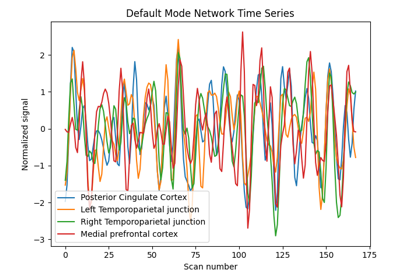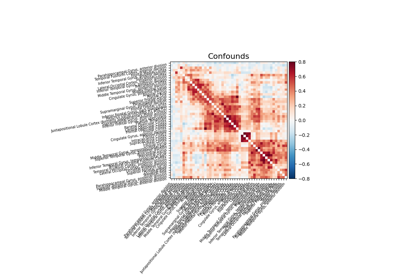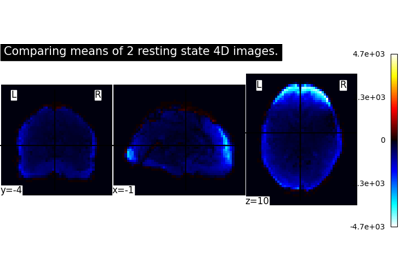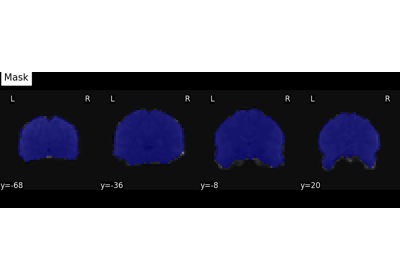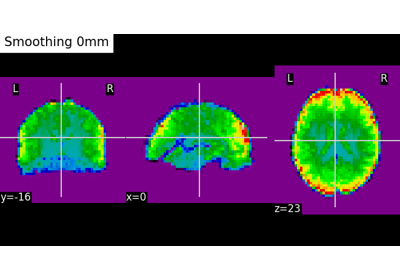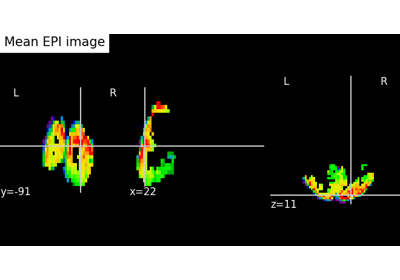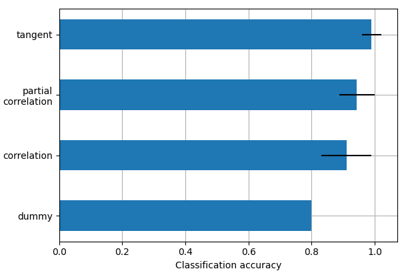Note
This page is a reference documentation. It only explains the function signature, and not how to use it. Please refer to the user guide for the big picture.
nilearn.datasets.fetch_development_fmri¶
- nilearn.datasets.fetch_development_fmri(n_subjects=None, reduce_confounds=True, data_dir=None, resume=True, verbose=1, age_group='both')[source]¶
Fetch movie watching based brain development dataset (fMRI).
The data is downsampled to 4mm resolution for convenience with a repetition time (t_r) of 2 secs. The origin of the data is coming from OpenNeuro. See Notes below.
Please cite Richardson et al.[1] if you are using this dataset.
Added in version 0.5.2.
- Parameters:
- n_subjects
int, default=None The number of subjects to load. If None, all the subjects are loaded. Total 155 subjects.
- reduce_confounds
bool, default=True If True, the returned confounds only include 6 motion parameters, mean framewise displacement, signal from white matter, csf, and 6 anatomical compcor parameters. This selection only serves the purpose of having realistic examples. Depending on your research question, other confounds might be more appropriate. If False, returns all fMRIPrep confounds.
- data_dir
pathlib.Pathorstror None, optional Path where data should be downloaded. By default, files are downloaded in a
nilearn_datafolder in the home directory of the user. See alsonilearn.datasets.utils.get_data_dirs.- resume
bool, default=True Whether to resume download of a partly-downloaded file.
- verbose
int, default=1 Verbosity level (0 means no message).
- age_group
str, default=’both’ Which age group to fetch
‘adults’ = fetch adults only (n=33, ages 18-39)
‘child’ = fetch children only (n=122, ages 3-12)
‘both’ = fetch full sample (n=155)
- n_subjects
- Returns:
- dataBunch
Dictionary-like object, the interest attributes are :
Notes
The original data is downloaded from OpenNeuro https://openneuro.org/datasets/ds000228/versions/1.0.0
This fetcher downloads downsampled data that are available on Open Science Framework (OSF). Located here: https://osf.io/5hju4/files/
Preprocessing details: https://osf.io/wjtyq/
Note that if n_subjects > 2, and age_group is ‘both’, fetcher will return a ratio of children and adults representative of the total sample.
References
Examples using nilearn.datasets.fetch_development_fmri¶
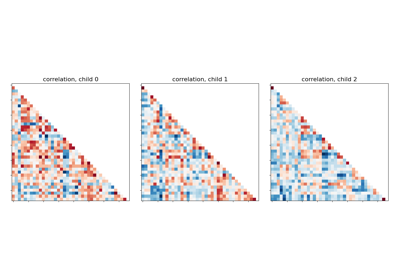
Classification of age groups using functional connectivity
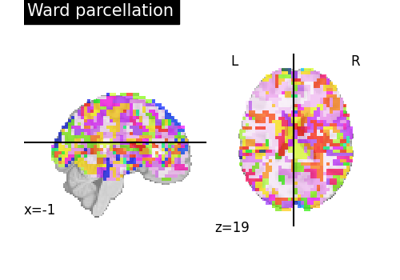
Clustering methods to learn a brain parcellation from fMRI
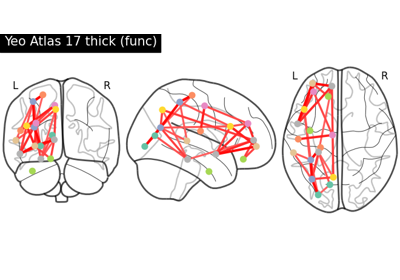
Comparing connectomes on different reference atlases
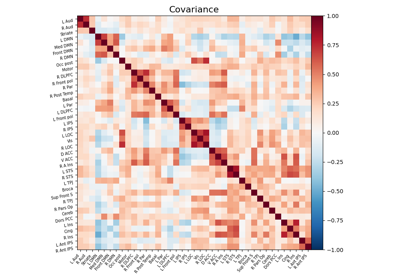
Computing a connectome with sparse inverse covariance
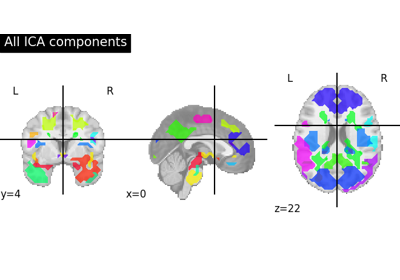
Deriving spatial maps from group fMRI data using ICA and Dictionary Learning
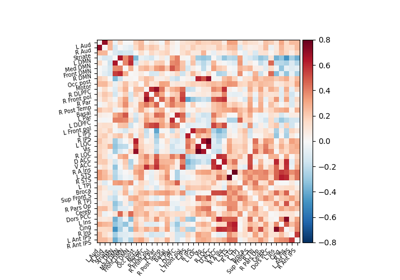
Extracting signals of a probabilistic atlas of functional regions
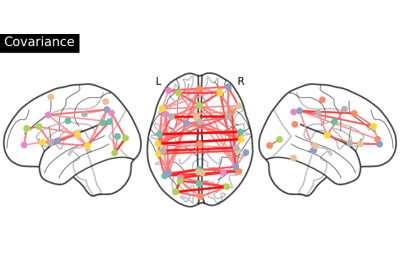
Group Sparse inverse covariance for multi-subject connectome
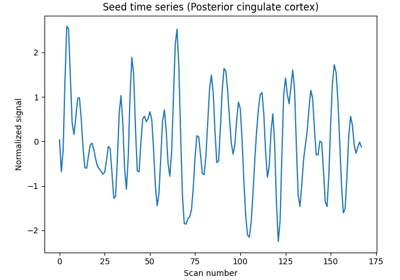
Producing single subject maps of seed-to-voxel correlation
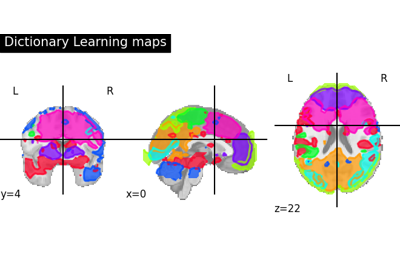
Regions extraction using dictionary learning and functional connectomes
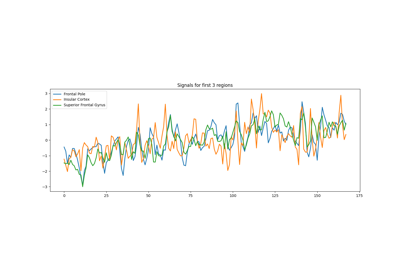
Extracting signals from brain regions using the NiftiLabelsMasker
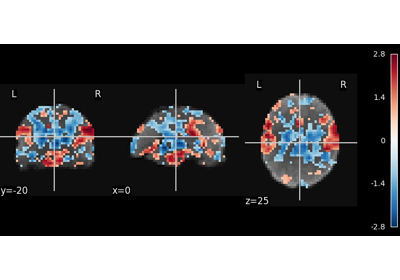
Multivariate decompositions: Independent component analysis of fMRI
